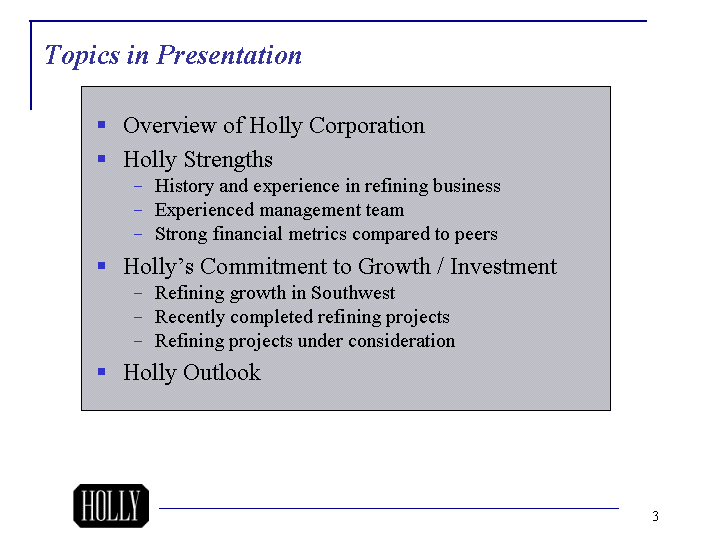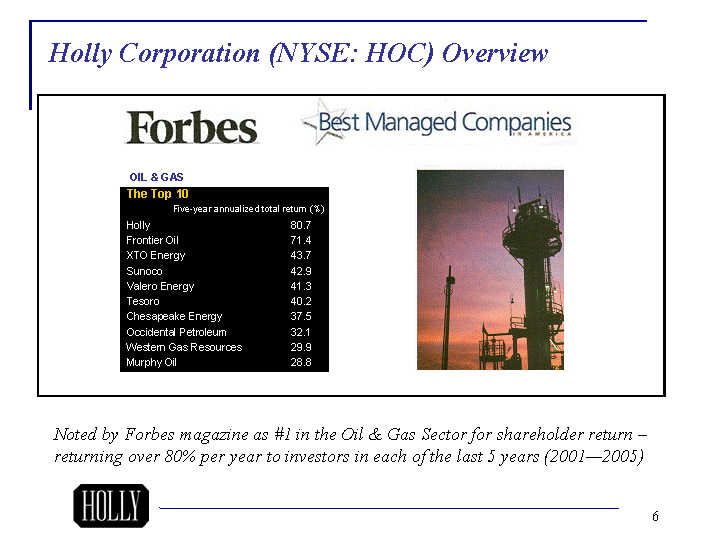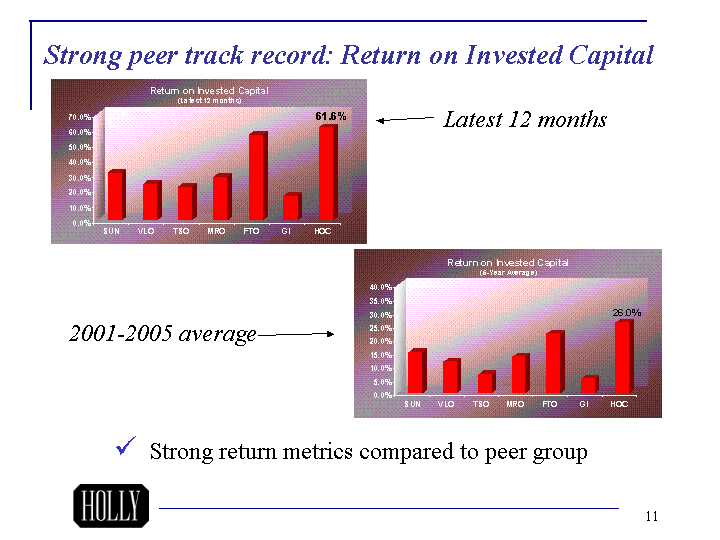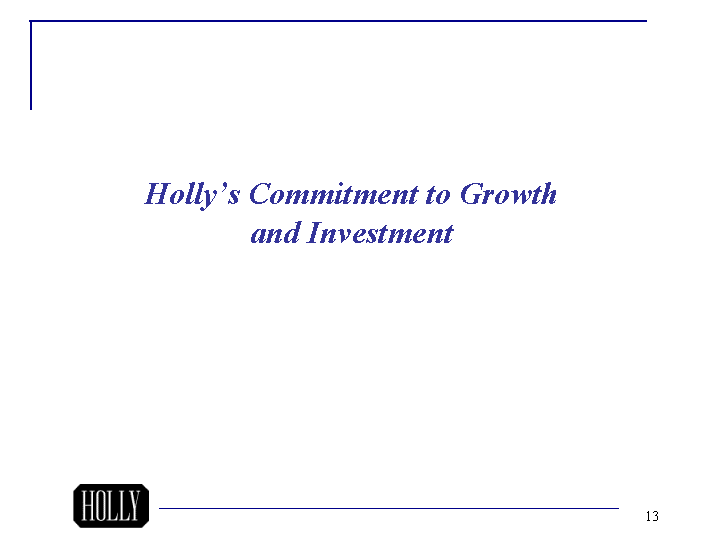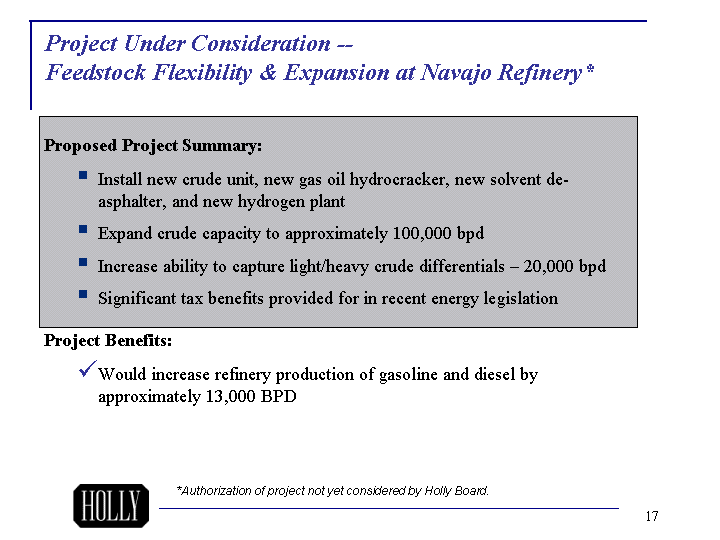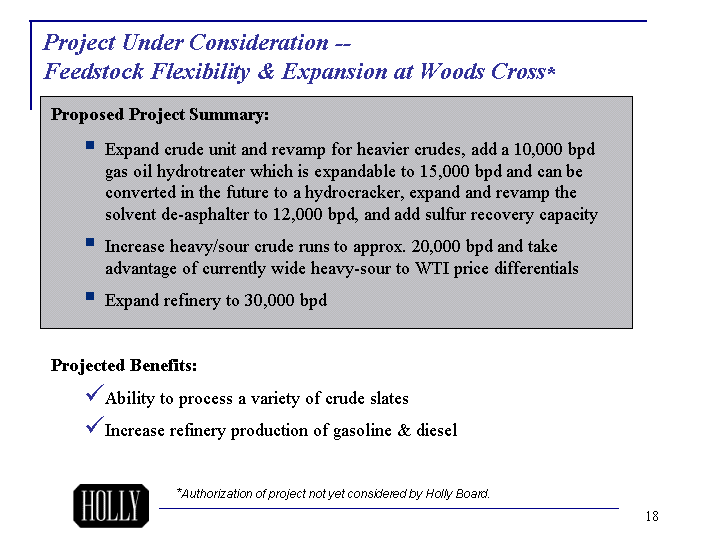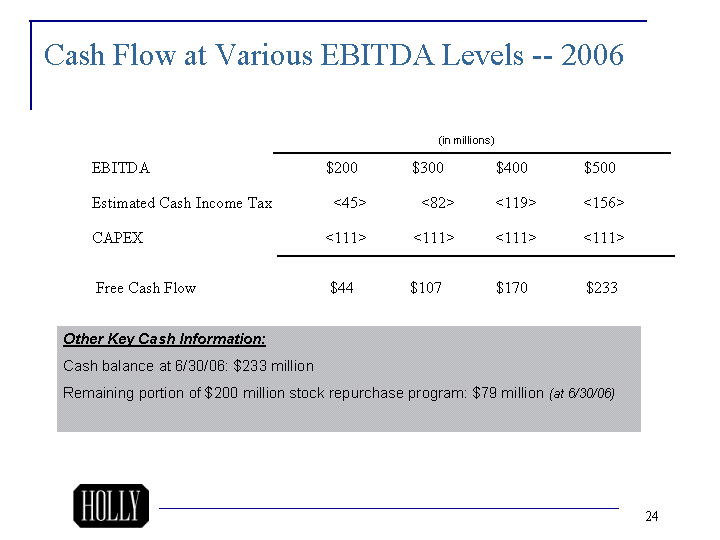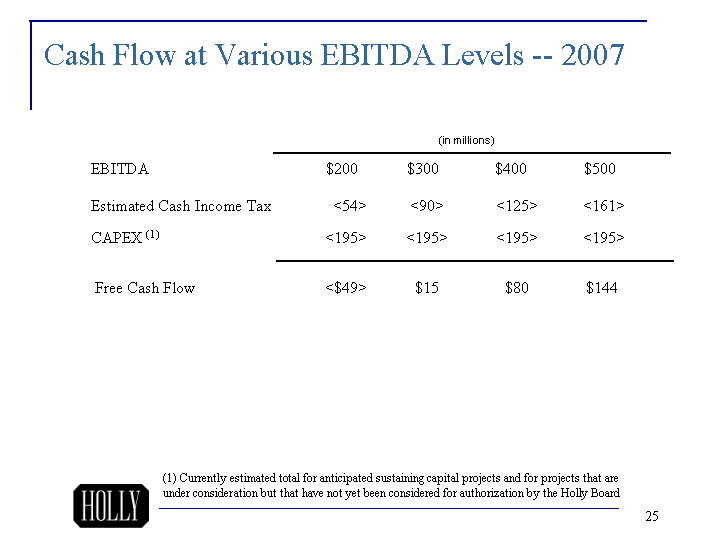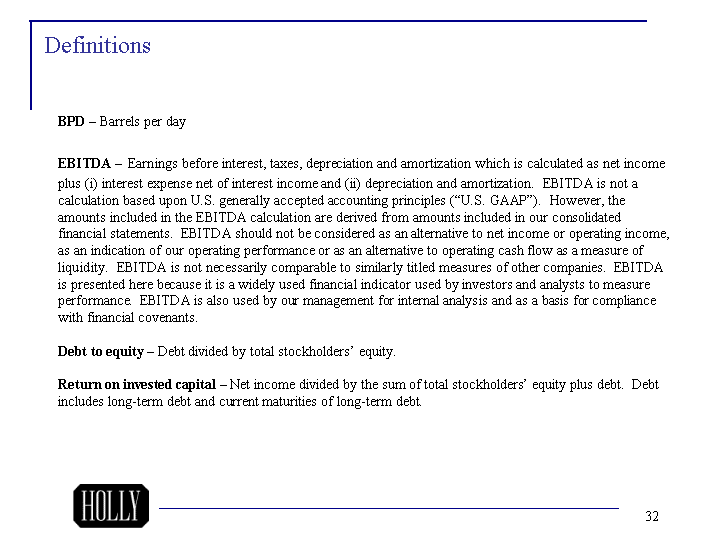Free signup for more
- Track your favorite companies
- Receive email alerts for new filings
- Personalized dashboard of news and more
- Access all data and search results
Filing tables
HF Sinclair similar filings
- 2 Nov 06 Holly Corporation Reports Third Quarter Results
- 30 Oct 06 Holly Corporation Announces $100 Million Increase to Stock Repurchase Program
- 4 Oct 06 Holly Corporation Announces That Chairman is Hospitalized in London
- 2 Oct 06 Regulation FD Disclosure
- 3 Aug 06 Holly Corporation Reports Record Second Quarter Results
- 31 May 06 Other Events
- 12 May 06 Holly Corporation Announces Two-For-One Stock Split and a 60% Dividend Increase
Filing view
External links


